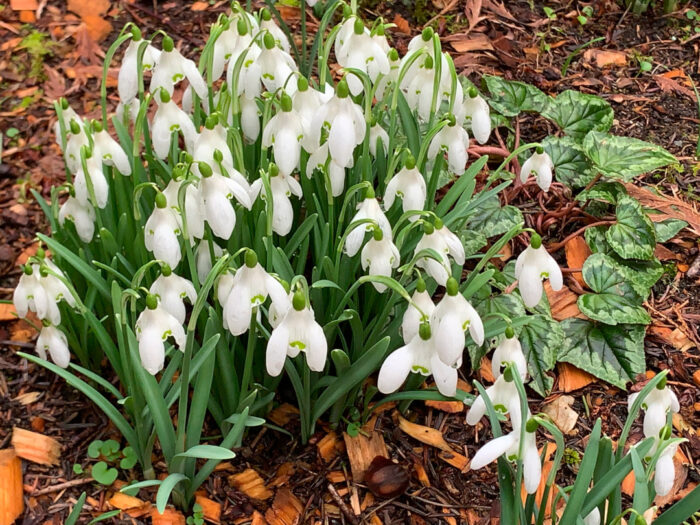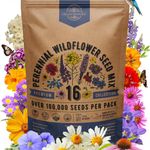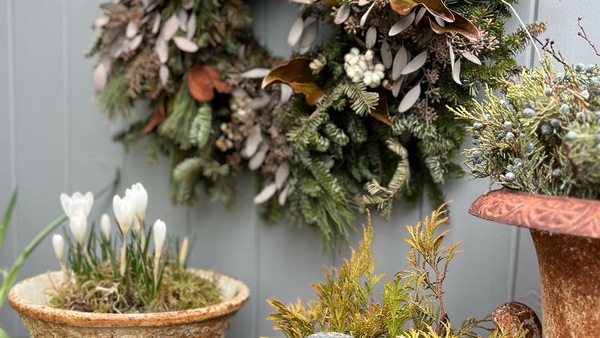Today we’re in Margot Navarre’s garden in Washington State, where snowdrops are doing their annual late winter–early spring display. These classic bulbs bloom earlier than just about anything else. Moreover, they are easy to grow and resistant to damage by deer, squirrels, and most other pests.
The most common of the 20 species of snowdrops is Galanthus nivalis (Zones 3–7). I have many G. nivalis along with G. elwesii (Zones 4–7) in my garden.
I have purchased a few special varieties of snowdrops throughout the years. Pictured is ‘Rosemarie Burnham’, a beautiful form with green-tinted petals.
Location for snowdrops is important so they can viewed despite their small size. I like to plant the bulbs in the woodlands along the edges of the trails.
Here they are growing on the edges of the path next to clumps of epimedium. The epimedium will ensure that this site is green and full long after the snowdrops have faded.
I am inspired by the snowdrop drifts in English gardens, but I have a long way to go to establish the snowdrop snowstorm. When clumps get big, I dig and divide when the snowdrops have finished blooming but while they still have their green leaves. This is the best time to divide snowdrops and is called digging them “in the green.” I add flags to mark the places I want to dig and plant them.
Snowdrops pair nicely with winter aconite (Eranthis hyemalis, Zones 4–9) and Cyclamen hederifolium (Zones 4–9), as shown in this picture. They also look nice in combinations with Cyclamen coum (Zones 6–8), hellebores (Helleborus hybrids, Zones 4–9), primroses (Primula species and hybrids), and ferns. I also like to grow them underneath deciduous trees such as Japanese maple (Acer palmatum, Zones 5–9) and our native vine maple (Acer circinatum, Zones 5–9).
This snowdrop is called ‘Primrose Warburg’ and is noteworthy because the base of the flower is yellow rather than the typical green. I purchased this rare one in 2015 from Mr. Lynn at Temple Nursery, New York. I put the special ones close to the house so I can watch them grow.
Have a garden you’d like to share?
Have photos to share? We’d love to see your garden, a particular collection of plants you love, or a wonderful garden you had the chance to visit!
To submit, send 5-10 photos to [email protected] along with some information about the plants in the pictures and where you took the photos. We’d love to hear where you are located, how long you’ve been gardening, successes you are proud of, failures you learned from, hopes for the future, favorite plants, or funny stories from your garden.
Have a mobile phone? Tag your photos on Facebook, Instagram or Twitter with #FineGardening!
Do you receive the GPOD by email yet? Sign up here.
Fine Gardening Recommended Products
The Regenerative Landscaper: Design and Build Landscapes That Repair the Environment
Fine Gardening receives a commission for items purchased through links on this site, including Amazon Associates and other affiliate advertising programs.
2024 Nautilus Award Gold Medal Winner! This awe-inspiring guide weaves together permaculture design, food resiliency, climate adaptation, community organizing, and indigenous wisdom that you can implement in your own backyard.
Gardener's Log Book from NYBG
Fine Gardening receives a commission for items purchased through links on this site, including Amazon Associates and other affiliate advertising programs.
This weatherproof five-year log book includes the following features:
· Sturdy waterproof cover to protect pages from rain and muddy soil
· Lined pages and gridded paper for plotting beds
· Five years of 12-month bloom and harvest grids for recording what you planted and when
· Authoritative appendices on composting, pruning, pest and disease control, and container gardening
· Useful reminders by season on fertilizing, mulching, and transplanting
· Space for listing your favorite sources and suppliers.
Organo Republic 16 Perennial Wildflower Seeds Mix for Indoor & Outdoors
Fine Gardening receives a commission for items purchased through links on this site, including Amazon Associates and other affiliate advertising programs.
Premium 16 Perennial Wildflower Seeds Mix - Special Garden Flower Seeds Blend designed for planting indoor & outdoors across North America. With over 16 varieties and 100,000 wildflower seeds, this mix is the best solution to attract pollinators - bees, butterflies & birds are essential for garden plants health. Our Special Perennial Wildflower Seeds Mix Includes White Yarrow, Columbine, New England Aster, Siberian Wallflower, Shasta Daisy, Lance-Leaf Coreopsis, Sweet William, Purple Coneflower, Blanketflower, Gayfeather, Blue Flax, Lupine, Dwarf Evening, Primrose, Mexican Hat, Prairie Coneflower, Black Eyed Susan. Easy & Fun Growing Experience with our online guides - Don’t plant disappointment - Add more colors to your wildflower garden! We send only super hearty heirloom flower seeds with the highest germination rate and fast sprout. Our detailed growing guide helps you grow seeds the garden of your dream like a PRO. Colorful Wildflower Garden from Seeds - Grow wildflowers everywhere - Indoor in window garden or Outdoors Flower garden Garden make a beautiful design for your garden borders, pathways, field or meadow and attract pollinators. Made in the USA by Small Family-Owned Business - Quality You Can Trust - Our wildflower bulk seeds variety pack are tested at the highest germination rates before being sealed to last for up to 3 years before you need to plant. Each packet of our flower seeds variety pack is resealable to make it easy to store and has its own label with a QR code for the growing instructions.





























Comments
Aaah, snowdrops. The Godesses of Spring. Bring ‘em on!!! Last year I spotted snowdrop clumps in a derelict garden of a rooming house in my area. I commented to the chap living there how much I loved them. The next day I was greeted by pots and pots full of snowdrops he had dug out for me. Now if the snow would just depart I could see them!
Love the snowdrops. Fortunately we picked a few yesterday because our plants are now covered with 5 inches of real snow.
Beautiful photography of your lovely early spring garden!
Lovely
How charming they look naturalized in your garden! Love them all, the common snowdrops and the rare ones. Thanks for sharing.
So very pretty! They brighten dreary late winter/early spring days!
Swooning!
Log in or create an account to post a comment.
Sign up Log in